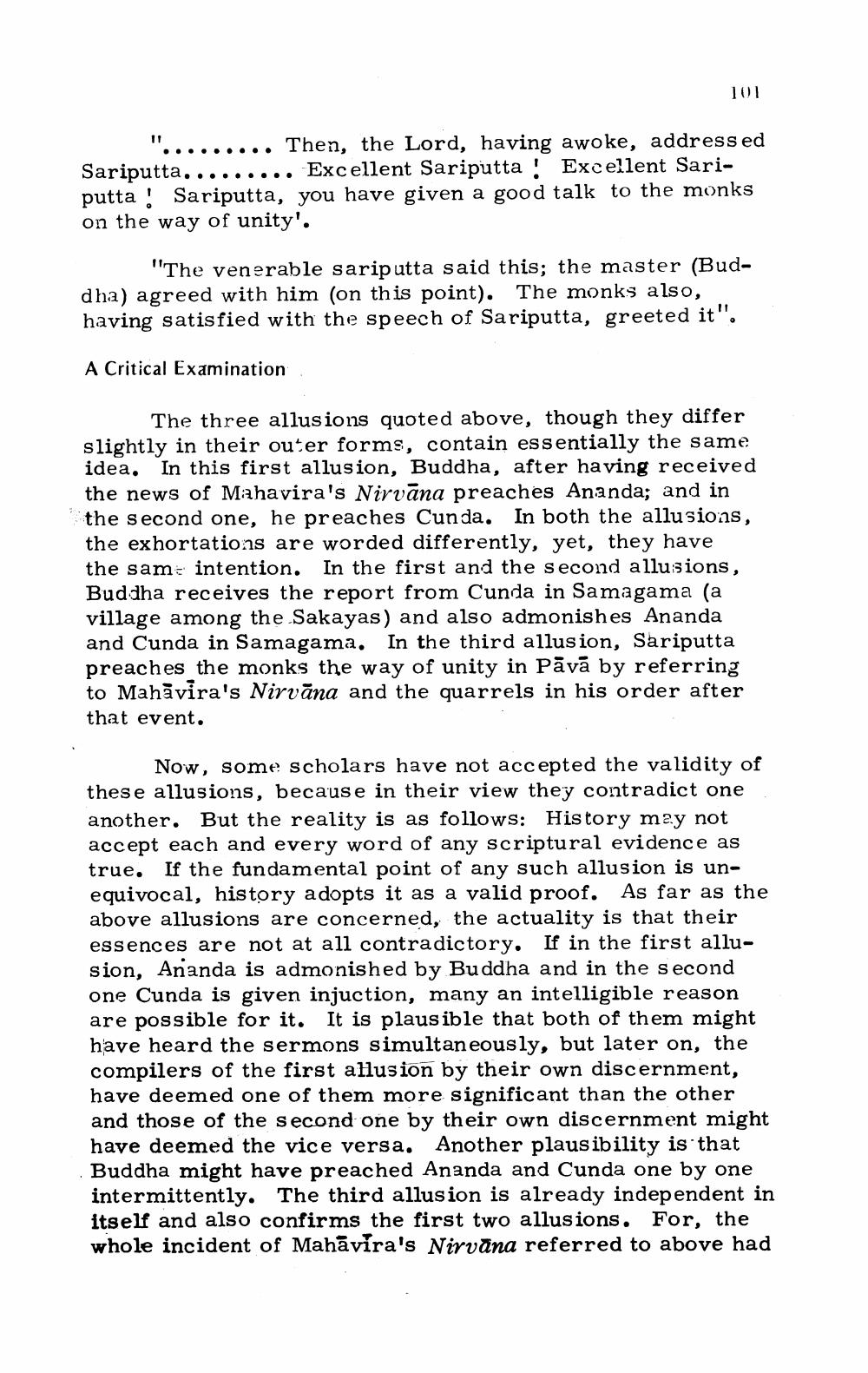________________
101
'......... Then, the Lord, having awoke, addressed Sariputta......... Excellent Sariputta! Excellent Sariputta! Sariputta, you have given a good talk to the monks on the way of unity'.
"The venerable sarip utta said this; the master (Buddha) agreed with him (on this point). The monks also, having satisfied with the speech of Sariputta, greeted it".
A Critical Examination
The three allusions quoted above, though they differ slightly in their outer forms, contain essentially the same idea. In this first allusion, Buddha, after having received the news of Mahavira's Nirvana preaches Ananda; and in the second one, he preaches Cunda. In both the allusions, the exhortations are worded differently, yet, they have the same intention. In the first and the second allusions, Buddha receives the report from Cunda in Samagama (a village among the Sakayas) and also admonishes Ananda and Cunda in Samagama. In the third allusion, Sariputta preaches the monks the way of unity in Pāvā by referring to Mahavira's Nirvana and the quarrels in his order after that event.
Now, some scholars have not accepted the validity of these allusions, because in their view they contradict one another. But the reality is as follows: History may not accept each and every word of any scriptural evidence as true. If the fundamental point of any such allusion is unequivocal, history adopts it as a valid proof. As far as the above allusions are concerned, the actuality is that their essences are not at all contradictory. If in the first allusion, Ananda is admonished by Buddha and in the second one Cunda is given injuction, many an intelligible reason are possible for it. It is plausible that both of them might have heard the sermons simultaneously, but later on, the compilers of the first aHusion by their own discernment, have deemed one of them more significant than the other and those of the second one by their own discernment might have deemed the vice versa. Another plausibility is that Buddha might have preached Ananda and Cunda one by one intermittently. The third allusion is already independent in Itself and also confirms the first two allusions. For, the whole incident of Mahavira's Nirvāna referred to above had




